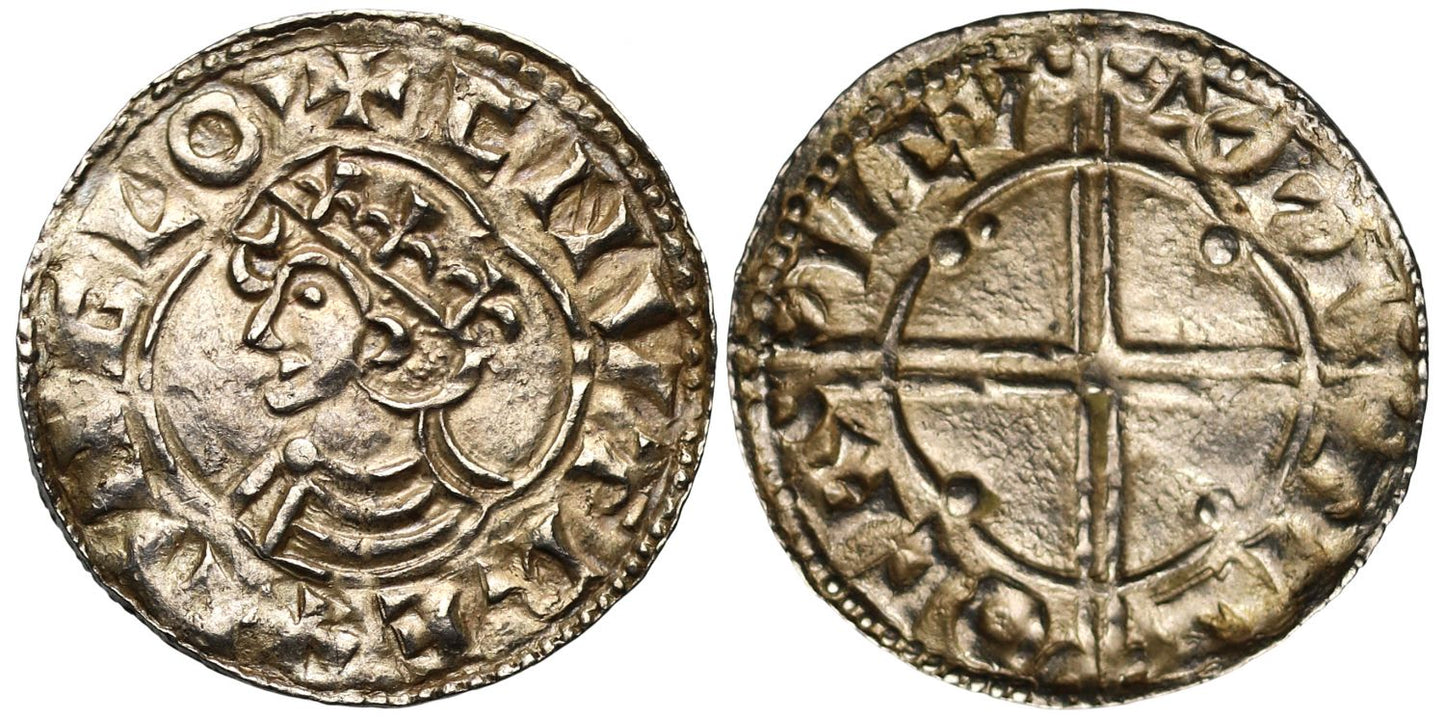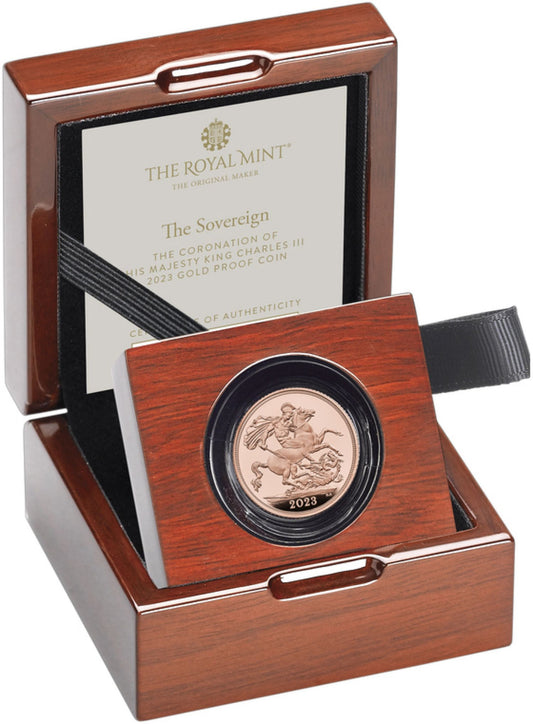FAQs
What makes a coin valuable?
I have coins to sell, what’s the next step?
How will my purchases be shipped?
What happens if I’m not entirely happy with my purchase?
Canute Penny, Quatrefoil type, Crewkerne Mint, moneyer Winas
Canute (1016-35),silver quatrefoil Penny (c.1017-25), Crewkerne Mint, Moneyer Winas, crowned and draped bust left within rounded quatrefoil, legend surrounding commences at top, +CNVT REX ANGLO',rev.pellet at centre of voided long cross, over rounded quatrefoil with pellet cusps, legend surrounding, +PI NAS O CR VCY, weight 0.85g (SCBI 13:299-301 Copenhagen IIIa; N.781; S.1157).Well struck with slight undulation in the flan, one slight weakness in legend both sides, with a great portrait and one of the rarest mints of this reign thus.
The legends translate as "Canute King of the English" on obverse and on the reverse "Winas of Crewkerne."
This Quatrefoil type coin is struck of the main Exeter style as defined by Mark Blackburn and Stewart Lyon in their article "Regional Die-Production in Cnut's Quatrefoil Issue" as are all the known Crewkerne coins of this type. Despite Canute being essentially a Viking King from overseas, the coinages of England continued in a similar vein to those of Aethelred II, in that the types changed every six years, meaning there are three main types for this reign, of which the quatrefoil type was the first. According to North there were up to 74 mints in operation with perhaps four other enigmatic places that remain uncertain. North records twelve different moneyers working at Bath in his reign through four types.
Canute could have been as young as 21 when he ascended the English throne after the 28thNovember 1016 upon the death of Edmund "Ironside" at Oxford. Though Edmund son of Aethelred II had a younger brother and two infant sons his advisers recognized Canute as successor. Though his birth date is not known, Canute was a commander in his Father's army from 1012, and at first had to settle a number of uprisings amongst the nobility and others, which he quelled by maintaining a large army and navy from heavy taxation. He kept Wessex at first for himself whilst dividing up other areas for regional government under trusted Danish allies. Canute had married Aelfgifu daughter of Ealdorman Aelfhelm of Northumbria but set her aside to marry Aethelred's widow Emma in 1017 who had fled to Normandy, and this latter union helped maintain the political continuity and tradition of English Kingship. Harald of Denmark died childless in 1018 and Canute used his English troops and finance to extend power to Scandanvia making his infant son Harthacanute titular Governor and heir of Denmark. Canute attempted to invade Sweden, and actually took Norway in 1028 having had a pilgrimage to Rome the year before. Canute left his eldest son by Aelfgifu, Swein to rule Norway and was now the most powerful King of England ever at this time and is likely when the apocryphal story of him trying to vainly order the coastal tide to turn and retreat in front of his courtiers emerged. However, Norway was lost by 1034, Canute did not respond, and he passed away suddenly at Shaftesbury in his mid-forties on the 12thNovember 1035.
Crewkerne in Somerset is situated 20 miles north west of Dorchester in the upper valley of the River Parret and was a rudimentary fortification in Saxon times. One of the rarest mint towns coinage starts with one moneyer in the reign of Aethelred II and briefly expands to three at the start of Canute's reign through three earlier types, whereupon it phases out with a single issue under Harold I.
Provenance:
Ex A. H. Baldwin and son Ltd purchases circa 1998, possibly from the Cambridge find of 1993.
FAQs
What makes a coin valuable?
I have coins to sell, what’s the next step?
How will my purchases be shipped?
What happens if I’m not entirely happy with my purchase?















